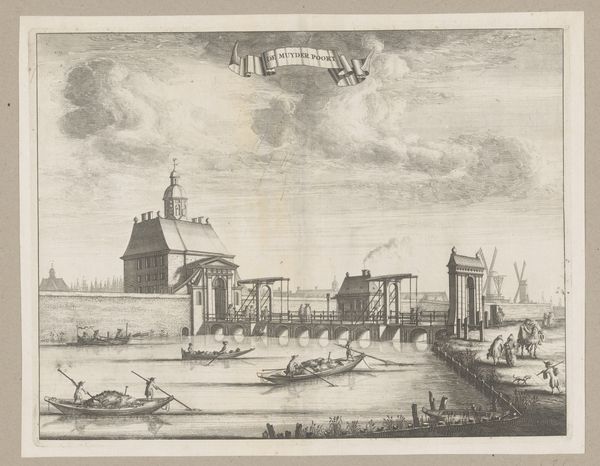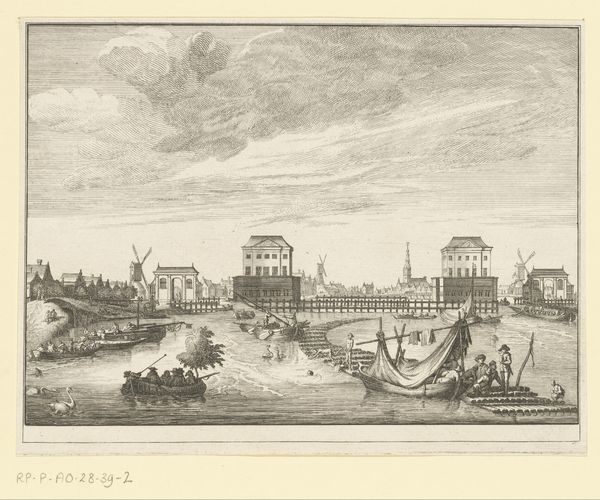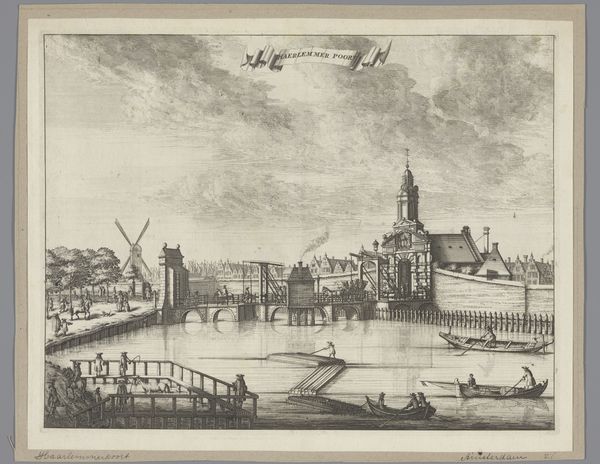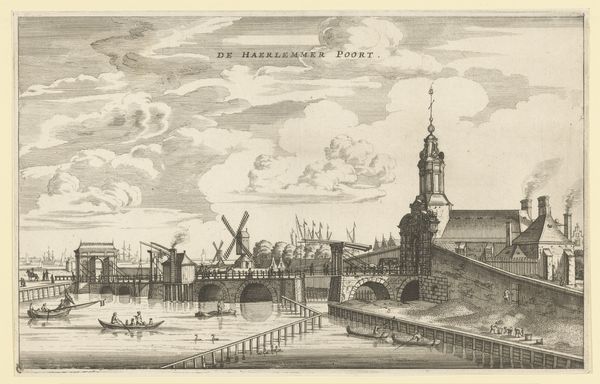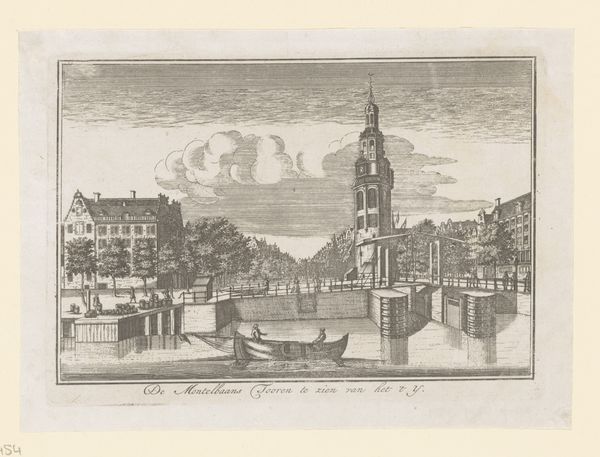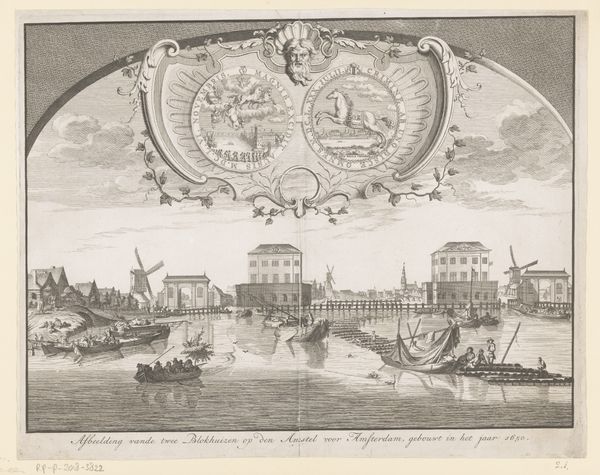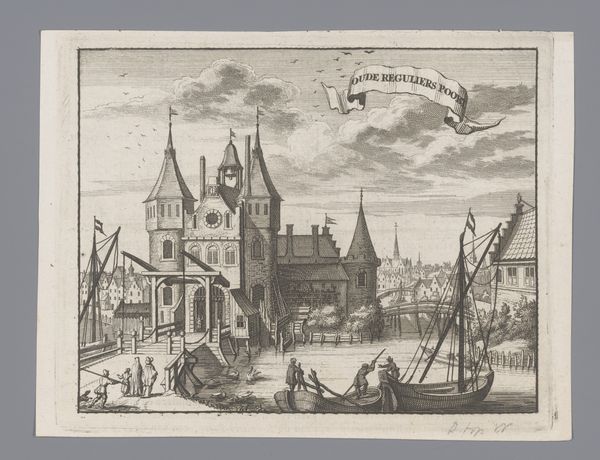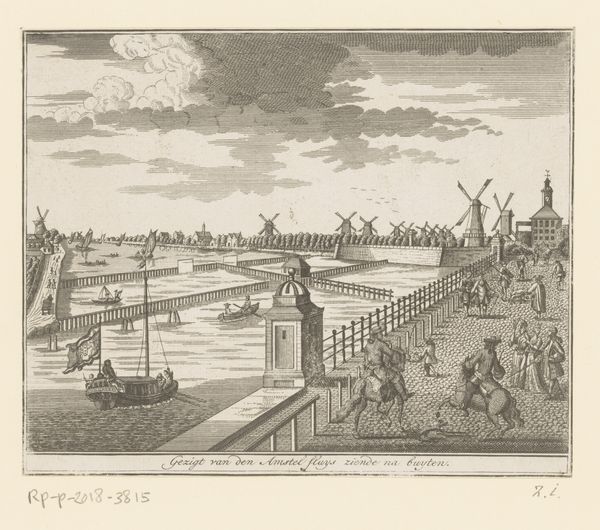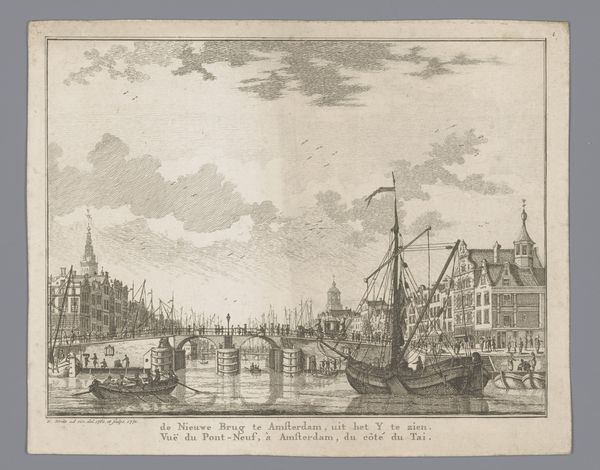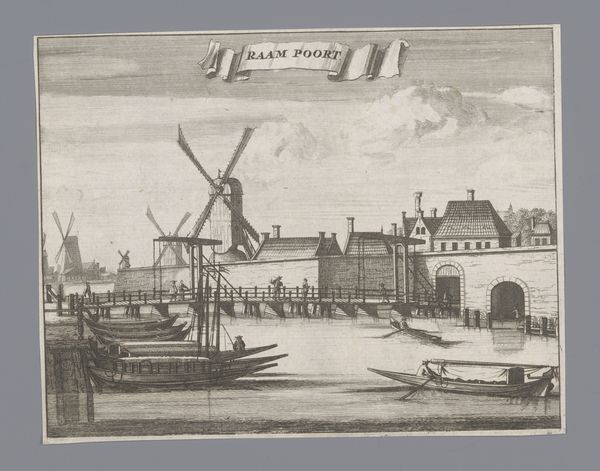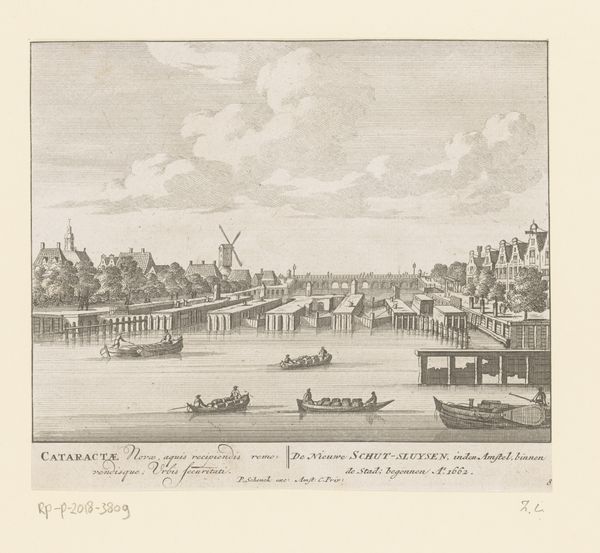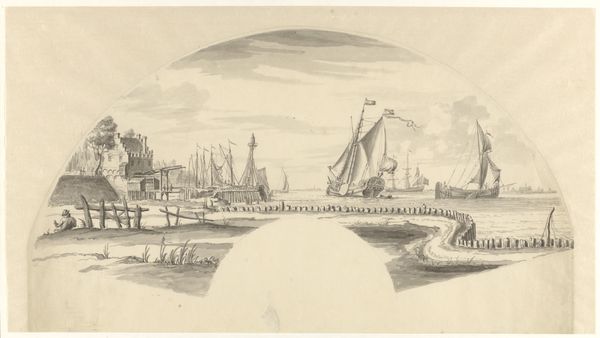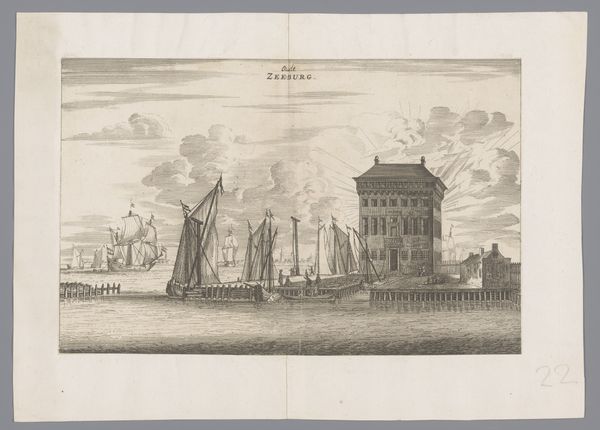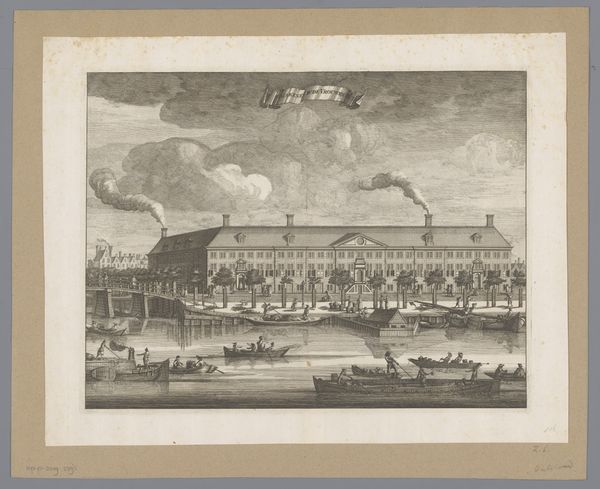
drawing, print, engraving
#
drawing
#
dutch-golden-age
# print
#
landscape
#
cityscape
#
engraving
Dimensions: height 116 mm, width 146 mm
Copyright: Rijks Museum: Open Domain
Curator: This engraving, dating back to 1693, is entitled "Gezicht op de Tweede Sint-Antoniespoort in Amsterdam," or "View of the Second Saint Anthony's Gate in Amsterdam." The identity of the artist remains a mystery. What strikes you most upon viewing it? Editor: It feels surprisingly peaceful. Considering it's a gate—a place typically associated with control, defense, perhaps even conflict—the overall impression is rather serene. The little figures casually walking about really contribute to that sense of everyday life. Curator: Absolutely. And this gate wasn't merely a portal; it served as a potent symbol of Amsterdam's mercantile power and civic identity during the Dutch Golden Age. City gates in general often held layered meanings. Editor: Speaking of the symbols embedded in this print, can you decode some of the architectural and natural imagery here? The windmill, for example, speaks of industry and harnessing nature. Curator: Indeed. Windmills were central to the Dutch economy. The Saint Anthony’s Gate itself represents civic authority. It stood as a reminder of Amsterdam's status as a thriving center of trade and navigation and the key means by which citizens could go to the harbour. Even the flocks of birds overhead suggest freedom and movement, recurring motifs. Editor: This brings forth another topic I'd love your thoughts on. Given the limited palette of engraving, do you think the artist manages to evoke the sensory experience of a bustling harbor town, even lacking color? Curator: Without a doubt. The fine lines create a sense of depth and atmosphere. You can almost hear the lapping of water against the boats, feel the damp air. The artist is also attentive to everyday life and social structure, isn’t she? You see the social dynamics. Editor: I agree, there’s a real dynamism despite its age and monochromatic palette. This image highlights a space of comings and goings and exchange but I'd argue there is also attention on ordinary lives, that feels radical for the period. Curator: A fitting close, I think. It reminds us that images, like cities, are built layer upon layer, holding multiple meanings simultaneously. Editor: Beautifully put. This image of Amsterdam feels vibrant, like the layered complexity and social texture of the city is so close.
Comments
No comments
Be the first to comment and join the conversation on the ultimate creative platform.
